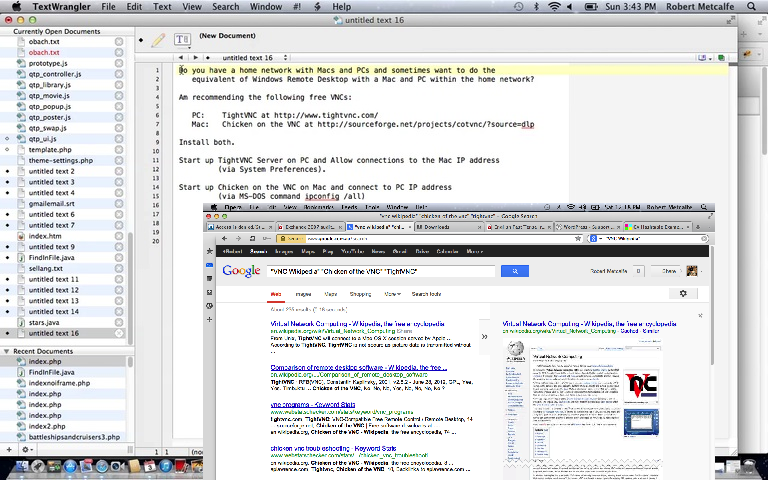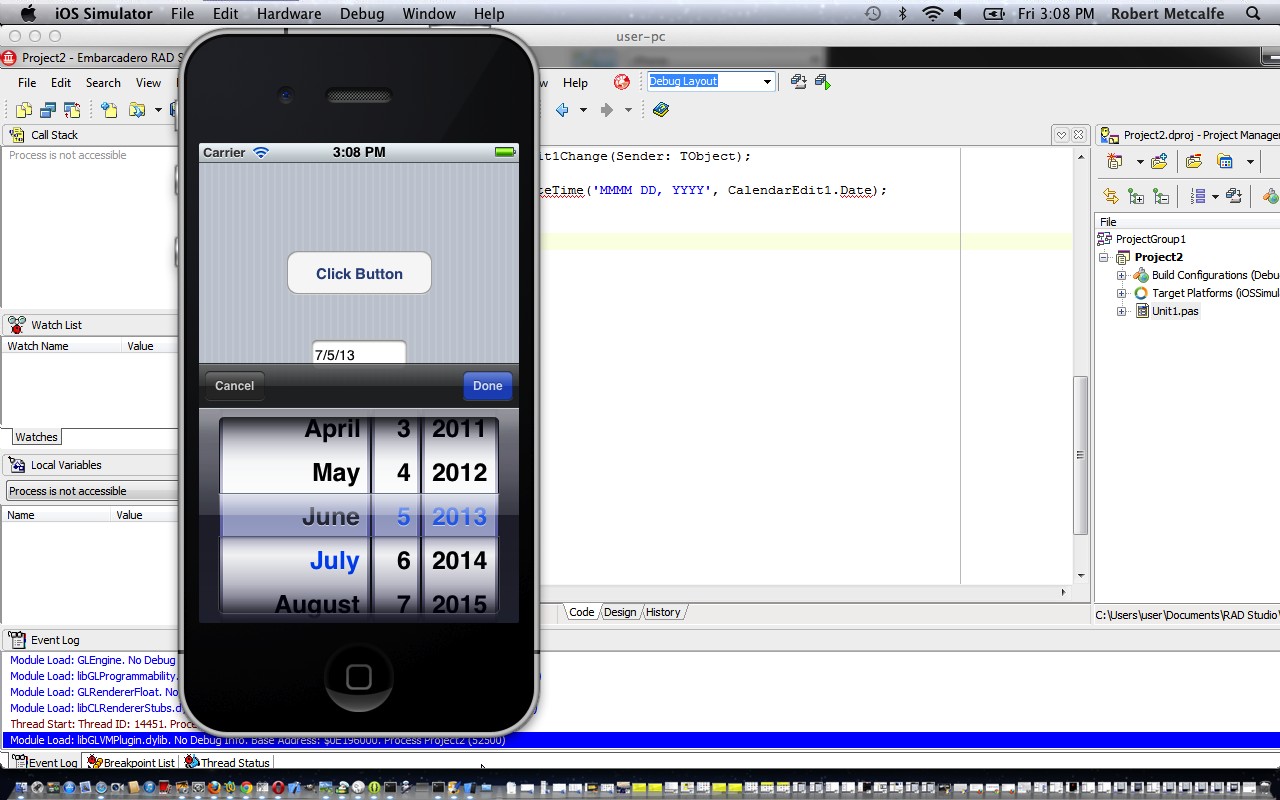Have you heard of Delphi? Maybe you know it as Turbo Delphi? It is a great GUI IDE application that can create desktop or web applications. It has inbuilt functionality to create a FireMonkey iOS Mobile App, and this primer tutorial shows you the easier parts of this, but leaves a lot of further research for the reader to do with more sophisticated app functionality, and to do with the deployment process for selling the app at the Apple App Store! Hope you are up to it?!
This tutorial builds on VNC Mac to PC “Remote Desktop” Primer Tutorial using ethernet connections (you can see this on first slide of tutorial). VNC was required here because the Embarcadero Delphi IDE is for Windows (laptop) and we are developing a Mobile App for iOS which runs, and needs to be tested, on a Mac laptop (while we are just using iOS Simulator, that is).
Embarcadero Delphi is an integrated development environment (IDE) for console, desktop graphical, web, and mobile applications.[1]
Delphi’s compilers use their own Object Pascal dialect of Pascal and generate native code for 32- and 64-bit Windows operating systems, as well as 32-bit Mac OS X and iOS. (iOS code generation is done with the Free Pascal compiler.[2]) As of late 2011 support for the Linux and Android operating system was planned by Embarcadero.[3]
To create applications for managed code platforms, a similar (but not mutually compatible) alternative is Delphi Prism.
Delphi was originally developed by Borland as a rapid application development tool for Windows, and as the successor of Borland Pascal. Delphi and its C++ counterpart, C++Builder, shared many core components, notably the IDE and VCL, but remained separate until the release of RAD Studio 2007. RAD Studio is a shared host for Delphi, C++Builder, and others.
In 2006, Borland’s developer tools section were transferred to a wholly owned subsidiary known as CodeGear, which was sold to Embarcadero Technologies in 2008.
Turbo Delphi was an Integrated Development Environment (IDE), created by CodeGear, which was targeted towards student, amateur, individual professionals, and hobbyist programmers. It used the Delphi programming language, which is a dialect of Pascal.
Turbo Delphi was announced on 8 August 2006. It became available for download on 5 September 2006.
There were two versions of Turbo Delphi, one which generates native Win32 applications (Turbo Delphi for Windows), and one that generated bytecode for the Microsoft .NET CLR. Each version came in two editions, a free Explorer edition and a Professional edition. The Professional edition was a commercial product available for purchase from Borland/Embarcadero, and it allowed extension and customization of the IDE which was not available in the Explorer edition.
It was most recently distributed by the CodeGear division of Embarcadero Technologies, which was purchased from Borland in 2008. [1] In October 2009, Embarcadero discontinued support of Turbo Delphi, along with the other Turbo products including Turbo C++. The product is not available for download any longer,[2] and it is not possible to receive a registration key from Embarcadero which was required to use the product. The latest release of Turbo Delphi was 2006, and it was based upon Embarcadero’s product Delphi 2006.
My experience with Delphi is to have “cloned” one Delphi Application with a database component to another very similar scenario. This is a limited range of experience but found the use of (Turbo) Delphi (Pascal) to be different to Visual Studio, but reasonably user friendly and perhaps better in some ways. Could probably say the same about XCode. All IDEs have their strengths and weaknesses, just as Pascal has its strengths and weaknesses compared to other languages, so you would expect that, and know that there are some fairly passionate fans of Delphi out there.
In this primer tutorial on Windows and Mac (connected via VNC) you can see a Embarcadero Delphi Pascal FireMonkey iOS Mobile Application in action.
Here is some downloadable Pascal code which you should rename to Unit1.pas.
Link to Embarcadero Delphi more information … via Wikipedia, where quote above came from..
Link to Turbo Delphi more information … via Wikipedia, where quote above came from..
Link to Embarcadero Delphi FireMonkey information at Embarcadero.
Link to Embarcadero Delphi Cross-Platform information from Embarcadero.
Link to Embarcadero Delphi iOS Tutorial information from Embarcadero which formed the basis for this tutorial.
Link to Delphi download website at Embarcadero.
Previous tutorial VNC Mac to PC “Remote Desktop” Primer Tutorial …

VNC Mac to PC Tutorial - Chicken of the VNC download for Mac from http://sourceforge.net/projects/cotvnc/?source=dlp and TightVNC download for PC from http://www.tightvnc.com/
Tutorial …
Transcript:
Do you have a home network with Macs and PCs and sometimes want to do the
equivalent of Windows Remote Desktop with a Mac and PC within the home network?
Am recommending the following free VNCs:
PC: TightVNC at http://www.tightvnc.com/
Mac: Chicken on the VNC at http://sourceforge.net/projects/cotvnc/?source=dlp
Install both.
Start up TightVNC Server on PC and Allow connections to the Mac IP address
(via System Preferences) … done now.
Start up Chicken on the VNC on Mac and connect to PC IP address
(via MS-DOS command ipconfig /all) … done.
Let’s see what Chicken on the Run Mac screen shows …
If this was interesting you may be interested in this too.
If this was interesting you may be interested in this too.




50 Responses to Delphi Pascal iOS Mobile App Primer Tutorial